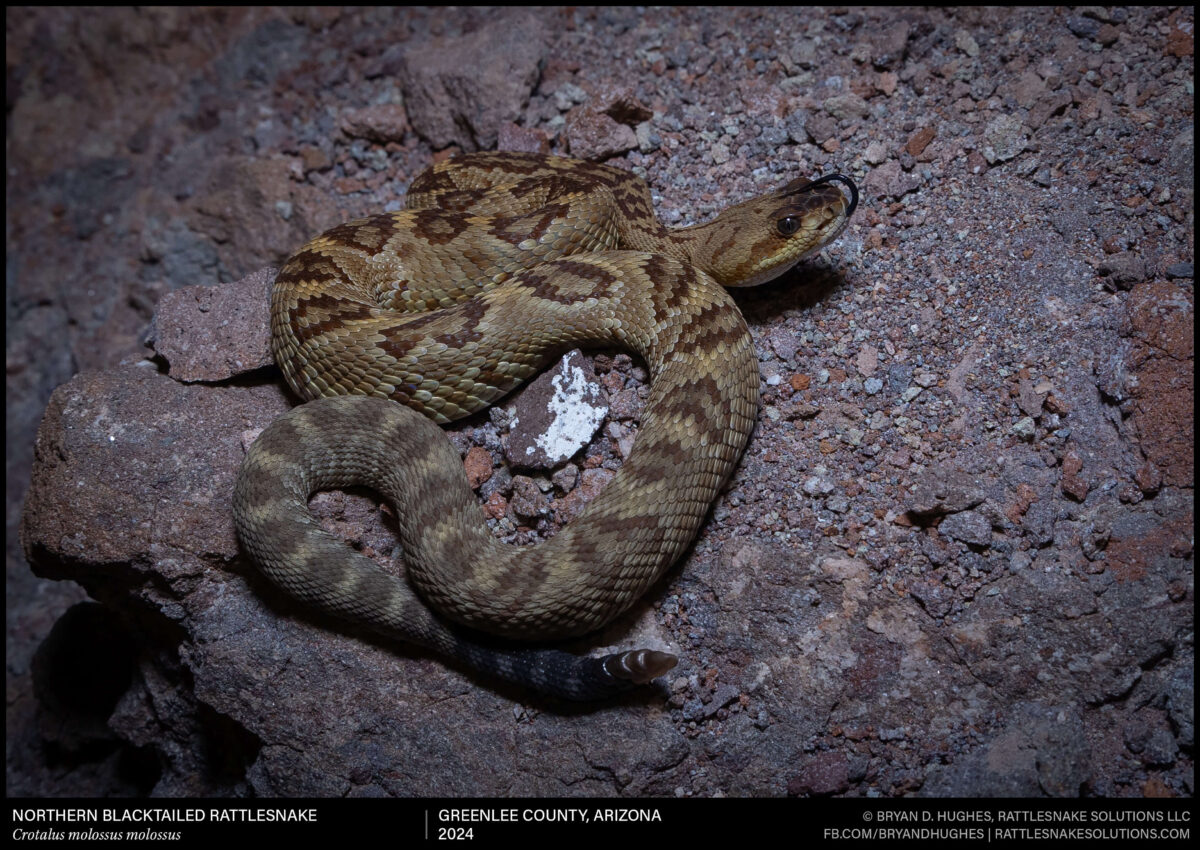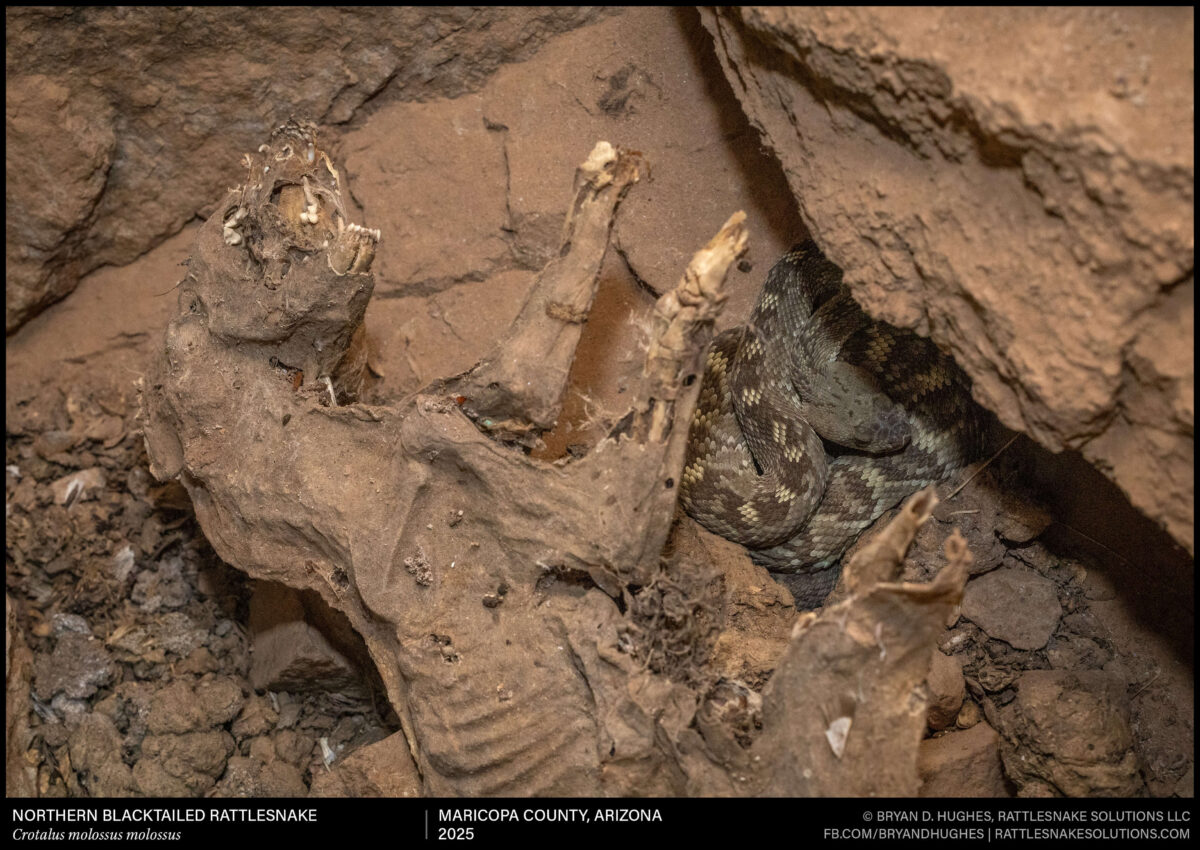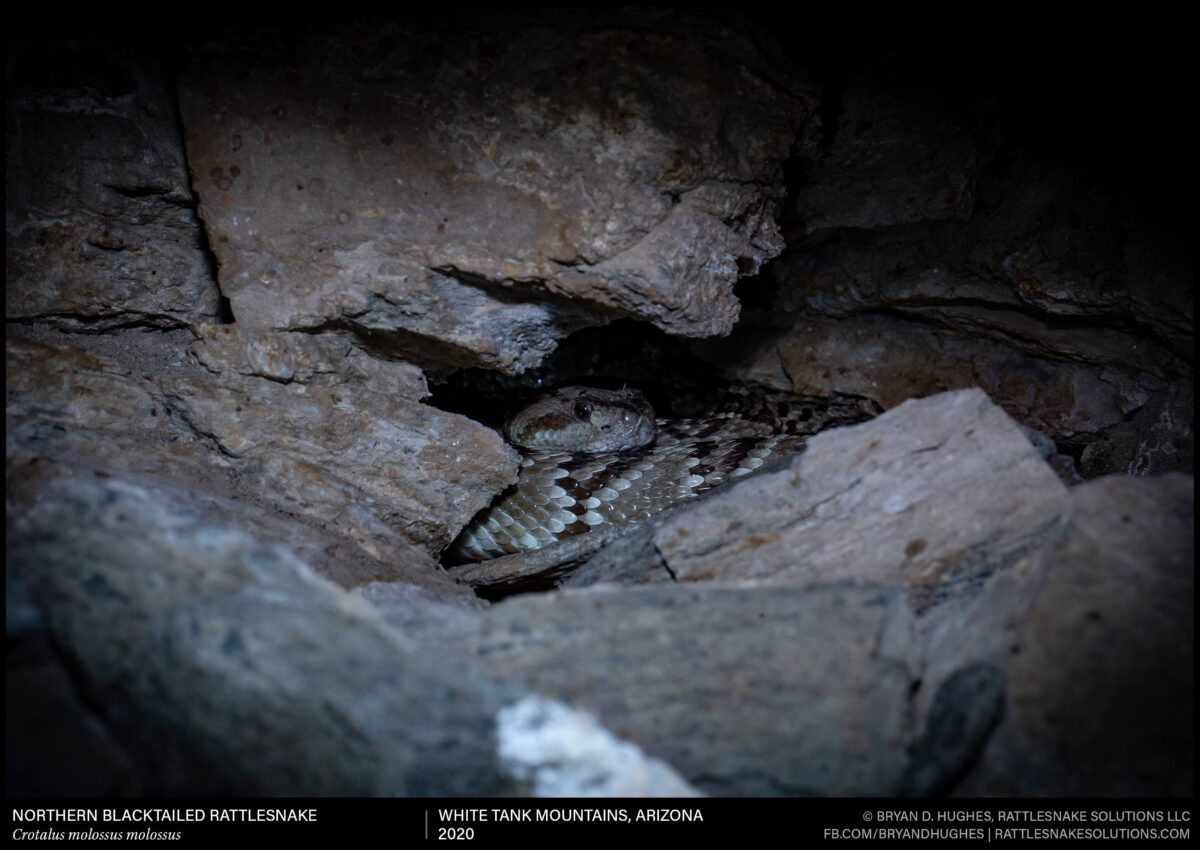A young Blacktailed Rattlesnake from the eastern end of Arizona. While not as sharply contrasted as the population from just south in the Sky Islands, I personally like the clean, subtle tones and velvety appearance of these snakes in this area.

A young Blacktailed Rattlesnake from the eastern end of Arizona. While not as sharply contrasted as the population from just south in the Sky Islands, I personally like the clean, subtle tones and velvety appearance of these snakes in this area.

I found this young Blacktailed Rattlesnake resting under the dried-out husk of a small mammal (skunk?) in a cave near Phoenix on a survey of lands managed by Desert Foothills Land Trust.
In wet years, this small cave fills with water from a few inches to around a foot deep. It becomes putrid slop, full of javelina feces and dozens of animals hiding from the heat. This small mammal had died in that water, eventually settling against this wall. This summer, the cave was bone dry. But, the dozen or so rattlesnakes that aestivate here each year still showed up.

A Blacktailed Rattlesnake hiding deep in a cave on an extremely hot day. During the heat of summer, rattlesnakes like this one may stay hidden away from lethal temperatures, staying in one spot or coming just outside the entrance after dark.

A Blacktailed Rattlesnake coiled in the grass in the Madrean woodlands of southeastern Arizona. These large, greenish rattlesnakes are a common sight for hikers and naturalists in the area.

After a relatively unproductive weekend in the early Spring at higher elevation, I made a quick stop by a large rocky outcrop on the way home on a whim. I have been driving past this particular rock for more than a decade, always in a hurry somewhere or dead tired, always thinking “one nof these days, I’ll check that out; it has to be a den“. Well that day was the day, and of course, it was a winter den. This large blacktailed rattlesnake was laid out over a boulder getting some sun, with others another in the crevices behind it. I’ll check it out again next year in more prime conditions.

Blacktailed Rattlesnakes can live in a wide variety of habitats, from high pine forests to low desert around sea level. This one was found in Greenlee County, Arizona several years ago.

A Blacktailed Rattlesnake we found on a late night hike of a canyon near Phoenix, Arizona. These are common snakes in mountainous regions, often seen by hikers. During the summer in desert areas, they are often most often nocturnal, usually encountered around sunup and just after dark. This one, fortunately, lives far from where people may come across it on accident.

A vibrant Northern Blacktailed Rattlesnake hiding away in a crevice in Pinal County, Arizona. These rattlesnakes are one of the species most often encountered by hikers, but are comparatively rarely found at homes. They’re secretive snakes, and easy to walk right by in most instances.

A Blacktailed Rattlesnake hiding out just outside its den. It took a few years to zero in on the exact spot, surveying the area in early spring and late fall and tracking where snakes were found in early egress. Eventually, there it was – with just two snakes in it to start, but the start of many more to come. The snake wasn’t disturbed, and due to the location, very likely may have never seen a human before.

A young Blacktailed Rattlesnake resting on top of a boulder. During the heat of summer, deep canyons offer cooler conditions, and water trapped in pools and wet sand months after the last rain. On the hottest, driest nights, we can often predict where these snakes are by the presence of cottonwood and native bunchgrass.
